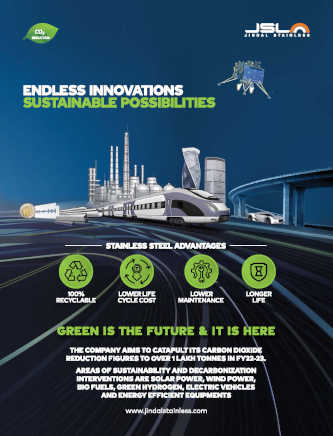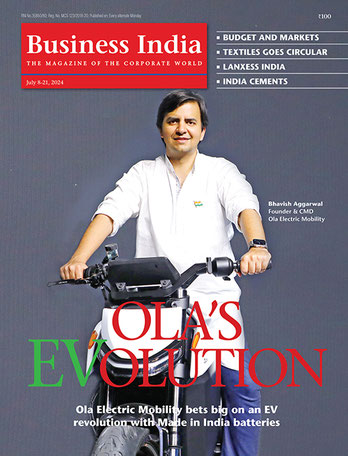Innovation and start-ups:
To fully meet the objectives set out in the Paris Climate Agreement, new technologies and business models will need to be validated and commercialised. India’s burgeoning climate innovation and entrepreneurship ecosystem is yielding world-class climate entrepreneurs, as the 40 profiled start-ups demonstrate.
Many of the climate technologies and business models developed for the western/developed countries are not ideal for the needs of developing economies. For example, while solar panels may be readily transferrable from market to market, many of the existing battery technologies on the market are ideal for temperate climates but rapidly degrade in extreme weather or rough terrain. Similarly, many of the digital technologies for climate developed in the West address such a narrow portion of the value chain as to be ineffective in local conditions.
With exceptional technical and business capabilities and a deep understanding of the needs of developing markets, India’s entrepreneurs are leading the way in building technologies not only for India, and not only for developing markets but for the world.
India’s climate economics:
India’s poor environmental performance paired with the business and political will to improve provides four mechanisms for recognising economic value: direct benefits, leapfrogging, the Wonder of the Commons and trade expansion.
Direct economic benefits from climate-friendly economic growth are straightforward – the economic benefit to business and the economy from transitioning to greener technologies. This will cause winners and losers. Leaders will benefit from early adoption, market share, and brand building.
Somewhat the opposite of opportunity cost, India has the opportunity to gain economically by leapfrogging polluting legacy infrastructure, while adopting the latest technologies. Take energy as an example. For years energy poverty was a curse that held the economy back. Now, however, India is not limited by the quantum and sunk costs of having the entirety of its growing energy needs to be met by polluting thermal energy – it is easier to shift to renewables because there is significant demand for additional energy and economies of scale have made renewables competitive.
Government policies to increase access to energy paired with a commitment to adopt renewable energy have provided the business community the confidence to rapidly deploy renewable technologies. Innovations in financing have made this possible while entrepreneurial ventures to digitise forecasting and scheduling have improved grid integration.
The Wonder of the Commons, again the opposite of our traditional economic term, equates to the economic benefit and GDP increases that may occur in response to improved environmental conditions (i.e. improved economic activity as a result of better air and water quality) as well as the benefit of any projected GDP losses that are averted. For example, if India’s air quality were such that it recovered all or even half of the suggested 8.5 per cent lost due to air pollution, it would reach the growth needed to hit the $5 trillion target.
Finally, trade. If India is able to execute on its various climate commitments, it should expand the market for Indian businesses to other economies.
Financing the green economy:
In making its NDCs, India estimated it would need international financing to the tune of $2.5 trillion in the years between 2015 and 2030. Of that request, India, as the largest global recipient in the developing world, is estimated to have received just more than a billion. Despite this, India has made tremendous progress, both tapping international markets for funds not earmarked for climate and developing domestic financing capabilities.
India is a leading voice in pushing developed economies to provide pledged climate finance and use moral authority of the progress so far made. Access to the financing requested could unleash many extremely meaningful opportunities. In the interim, there are still a lot of opportunities for low-cost climate initiatives that will yield big results.
More importantly, is that the local markets are adapting. Businesses are becoming more competitive to receive international funding not designated for climate, while local financing options are evolving. (From start-up equity to insurance and infrastructure debt, many ideas and leading practices are shared in the relevant section.) These models, very well, could be the tools that help the rest of the developing world transition, at least as long as global climate finance remains well below expectation.
Innovation and start-ups:
To fully meet the objectives set out in the Paris Climate Agreement, new technologies and business models will need to be validated and commercialised. India’s burgeoning climate innovation and entrepreneurship ecosystem is yielding world-class climate entrepreneurs, as the 40 profiled start-ups demonstrate.
Many of the climate technologies and business models developed for the western/developed countries are not ideal for the needs of developing economies. For example, while solar panels may be readily transferrable from market to market, many of the existing battery technologies on the market are ideal for temperate climates but rapidly degrade in extreme weather or rough terrain. Similarly, many of the digital technologies for climate developed in the West address such a narrow portion of the value chain as to be ineffective in local conditions.
With exceptional technical and business capabilities and a deep understanding of the needs of developing markets, India’s entrepreneurs are leading the way in building technologies not only for India, and not only for developing markets but for the world.
India’s climate economics:
India’s poor environmental performance paired with the business and political will to improve provides four mechanisms for recognising economic value: direct benefits, leapfrogging, the Wonder of the Commons and trade expansion.
Direct economic benefits from climate-friendly economic growth are straightforward – the economic benefit to business and the economy from transitioning to greener technologies. This will cause winners and losers. Leaders will benefit from early adoption, market share, and brand building.
Somewhat the opposite of opportunity cost, India has the opportunity to gain economically by leapfrogging polluting legacy infrastructure, while adopting the latest technologies. Take energy as an example. For years energy poverty was a curse that held the economy back. Now, however, India is not limited by the quantum and sunk costs of having the entirety of its growing energy needs to be met by polluting thermal energy – it is easier to shift to renewables because there is significant demand for additional energy and economies of scale have made renewables competitive.
Government policies to increase access to energy paired with a commitment to adopt renewable energy have provided the business community the confidence to rapidly deploy renewable technologies. Innovations in financing have made this possible while entrepreneurial ventures to digitise forecasting and scheduling have improved grid integration.
The Wonder of the Commons, again the opposite of our traditional economic term, equates to the economic benefit and GDP increases that may occur in response to improved environmental conditions (i.e. improved economic activity as a result of better air and water quality) as well as the benefit of any projected GDP losses that are averted. For example, if India’s air quality were such that it recovered all or even half of the suggested 8.5 per cent lost due to air pollution, it would reach the growth needed to hit the $5 trillion target.
Finally, trade. If India is able to execute on its various climate commitments, it should expand the market for Indian businesses to other economies.
Financing the green economy:
In making its NDCs, India estimated it would need international financing to the tune of $2.5 trillion in the years between 2015 and 2030. Of that request, India, as the largest global recipient in the developing world, is estimated to have received just more than a billion. Despite this, India has made tremendous progress, both tapping international markets for funds not earmarked for climate and developing domestic financing capabilities.
India is a leading voice in pushing developed economies to provide pledged climate finance and use moral authority of the progress so far made. Access to the financing requested could unleash many extremely meaningful opportunities. In the interim, there are still a lot of opportunities for low-cost climate initiatives that will yield big results.
More importantly, is that the local markets are adapting. Businesses are becoming more competitive to receive international funding not designated for climate, while local financing options are evolving. (From start-up equity to insurance and infrastructure debt, many ideas and leading practices are shared in the relevant section.) These models, very well, could be the tools that help the rest of the developing world transition, at least as long as global climate finance remains well below expectation.
The individual at the heart of the economy:
Many of the macro factors are in place for the Indian economy to respond to climate change, grow as a result of its climate action, and lead globally.
But as with anything, the devil is in the details. In this case, India has 1.3 billion details.
India’s aggregate climate impact has been atrocious, yet its per capita impact is amongst the lowest. To succeed in implementing its climate agenda, and driving the change it wishes to see, individuals and behaviour change will be critical.
Behaviour change will be required across all sectors of society. Consumption and waste cannot follow historic trajectories of developed economies nor can it follow certain traditional practices like flood irrigation. Dietary changes may revert to grains and millets that are more nutritious, disease-resistant and require less water. Conservation of water and energy will be a necessity. Being ‘Green’ will need to be made an aspiration, an attainable one, but a characteristic that is as admired as much as being rich or smart or beautiful.
Individuals can no longer shy away from what they know is better behaviour because one person cannot make a difference. And they can no longer only do what is green while in social situations.
Climate change is not an issue that any one person, one business, one industry or country can solve alone, but it is one in which everyone must begin doing their part.


























